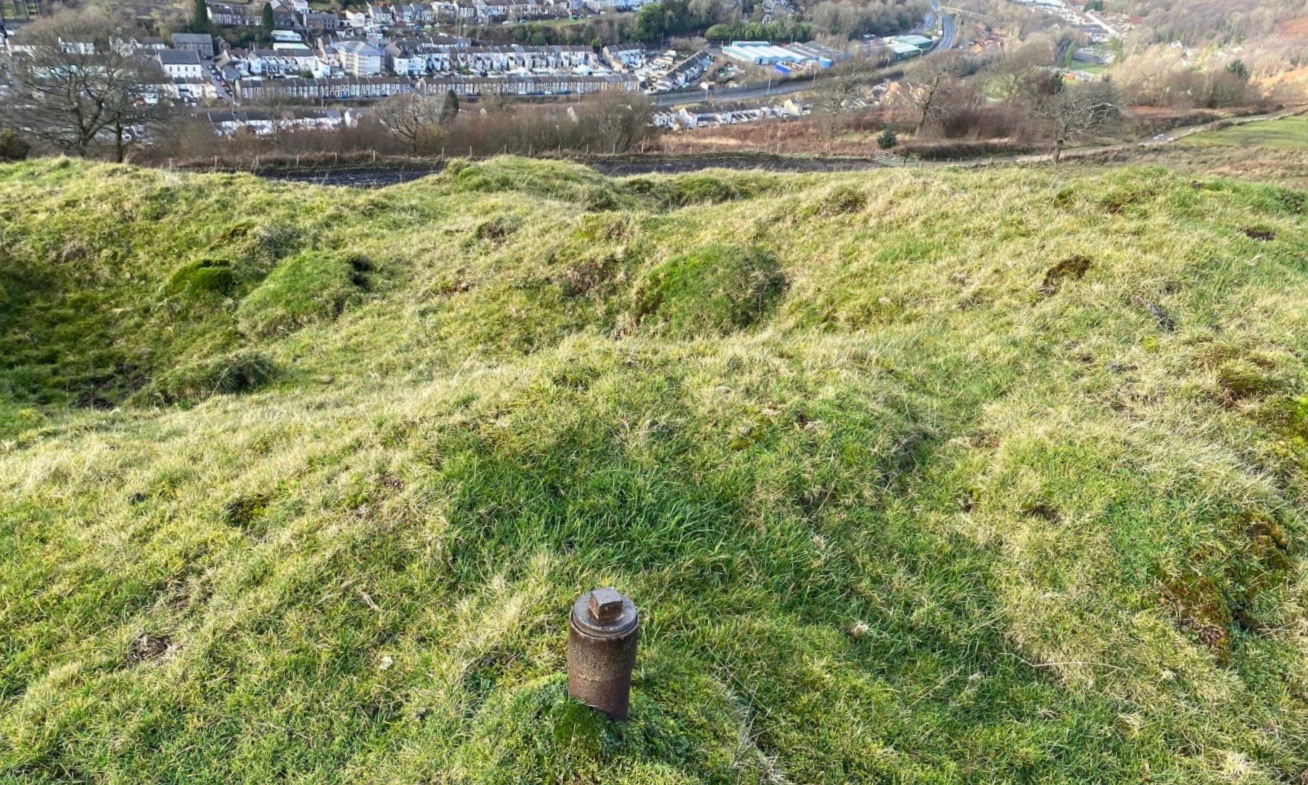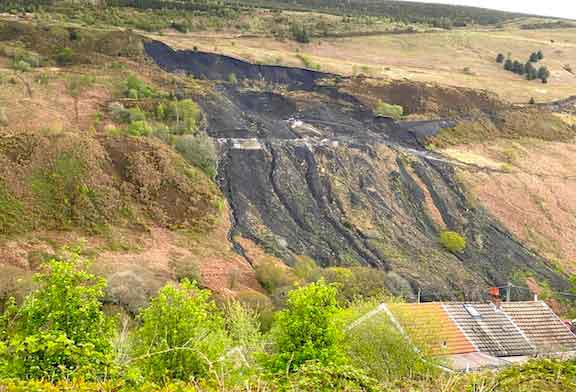Why are the RCT Council allowing wind turbines above redundant coal tips?

Clear South Wales Coal Tips Stop Ynyshir Wind Farm 2020
You may have seen these recent notices around Ynyshir. This relates to the proposed wind turbine development above Ynyshir on the eastern hillside.

It refers to a drainage condition; that the development company has yet to get the council to discharge in 5 years This company has extended the application by a year to try to get drainage approved.
If they haven’t been able to get the drainage condition discharged in 5 years, the Council obviously has a level of concern about the drainage implications.
I’ve been through all the company submitted documents. Not once do they consider the impact to the west of the turbine site. The documents talk about using soak-away techniques to allow the water to soak into the hillside. Where does this water end up? They don’t say.
What about the high-risk (Category D) coal tips west of the site? They don’t mention the tips.
Clear South Wales Coal Tips How about rain modelling?
They use data from pre-storm Dennis in 2020, and use data from 2019 (4 years ago!) and prior. Why?
If this planning application affects you and If you think these questions are essential. Ask the council planning department questions and publish more details of the development, you can find more details by going to the Stop Ynyshir Wind Farm 2020 group.
Rhondda Cynon Taf Council are doing their best to keep the information concerning dangerous coal tips from residents

The company CENIN behind the proposed wind turbine development is sited just above the redundant coal tips above Ynyshir, In 2017 the company was granted planning permission for two wind turbines, this was prior to the combination of Storm Dennis’s heavy rain and landslides in the area.
Natural Resources Wales in response to RCT Council Planning Department was to advise the council of NRW Development Planning Advisory Service Consultation Topics September 2018: AberdareOnline has highlighted sections 12 and 15 of the advice, as it would seem relevant to the development.
Section 12: For new establishments; or modifications to existing establishments which could have significant repercussions on major accident hazards; or within 250 metres, where the sighting of development is such as to increase the risk of the consequence of the major accident
Section 15: Any development involving groundwork which is on, or within 250 metres, of a historic, closed or active landfill site.




